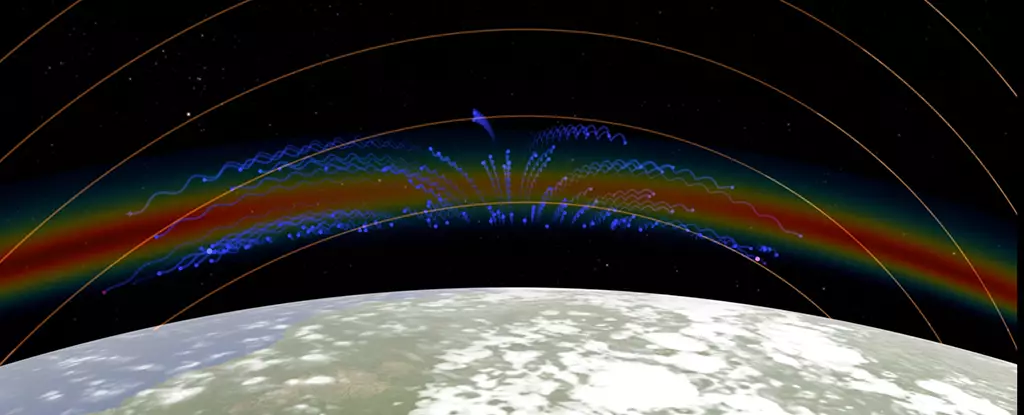The ionosphere, a region of Earth’s atmosphere located approximately 48–965 kilometers (30–600 miles) above the surface, has been a subject of fascination for NASA scientists. Recent discoveries using the Global-scale Observations of the Limb and Disk (GOLD) imaging instrument have revealed mysterious shapes that defy previous understanding of the ionosphere’s behavior.
Shapes resembling X and C have been detected in the ionosphere, challenging existing knowledge about this region of the atmosphere. While previous studies have observed merging crests forming an X shape following solar storms and volcanic eruptions, the new data suggests that these shapes can also appear during “quiet times.” This unexpected finding hints at the influence of localized factors that are not yet fully understood.
The ionosphere becomes electrically charged during the day when sunlight interacts with it, leading to the formation of plasma bands made up of charged particles. These plasma bands are further shaped by Earth’s magnetic field, resulting in the creation of crests and bubbles that make up the observed X and C shapes. Computer models indicate that lower atmospheric conditions may be causing the plasma to move downwards, contributing to the formation of these unique shapes.
In addition to X shapes, scientists have also observed C-shaped and reverse C-shaped bubbles in the plasma of the ionosphere. These shapes are believed to be influenced by Earth’s winds, akin to how wind patterns affect the leaning of trees. However, the close proximity of these C shapes – sometimes just 634 kilometers (400 miles) apart – has raised questions about the role of localized factors such as wind shear or tornadoes in their formation. While the occurrence of closely packed C shapes is currently rare, further investigation is needed to understand the mechanisms behind their appearance.
The presence of unique shapes in the ionosphere has important implications for communication and navigation systems that rely on radio waves to transmit signals over long distances. Disruptions in the ionosphere, as observed in this study, can potentially impact crucial infrastructure for communication and GPS navigation. By studying these phenomena, scientists hope to improve our understanding of how radio waves propagate through the ionosphere and how disruptions can affect communication technologies.
The discoveries made using the GOLD imaging instrument provide valuable insights into the complex dynamics of Earth’s ionosphere. The unexpected shapes observed in the plasma reveal the intricate interactions between various factors, highlighting the need for further research to unravel the mysteries of this region of the atmosphere. Through advancements in technology and scientific research, we continue to uncover new aspects of Earth and the Universe, deepening our understanding of the ever-changing environment that surrounds us.


Leave a Reply